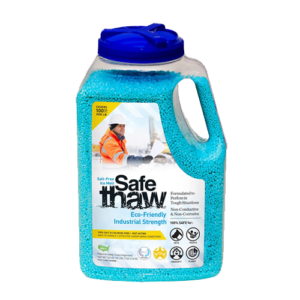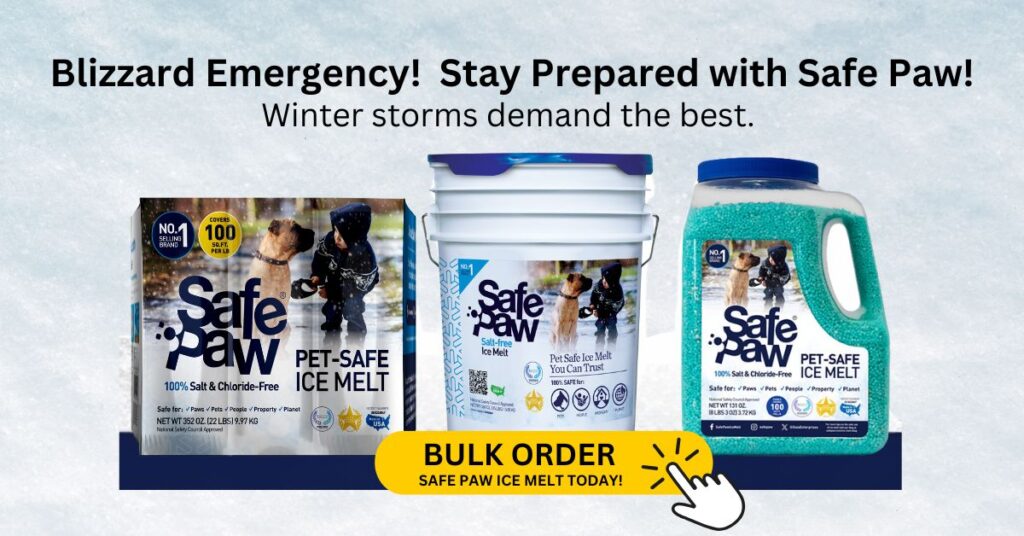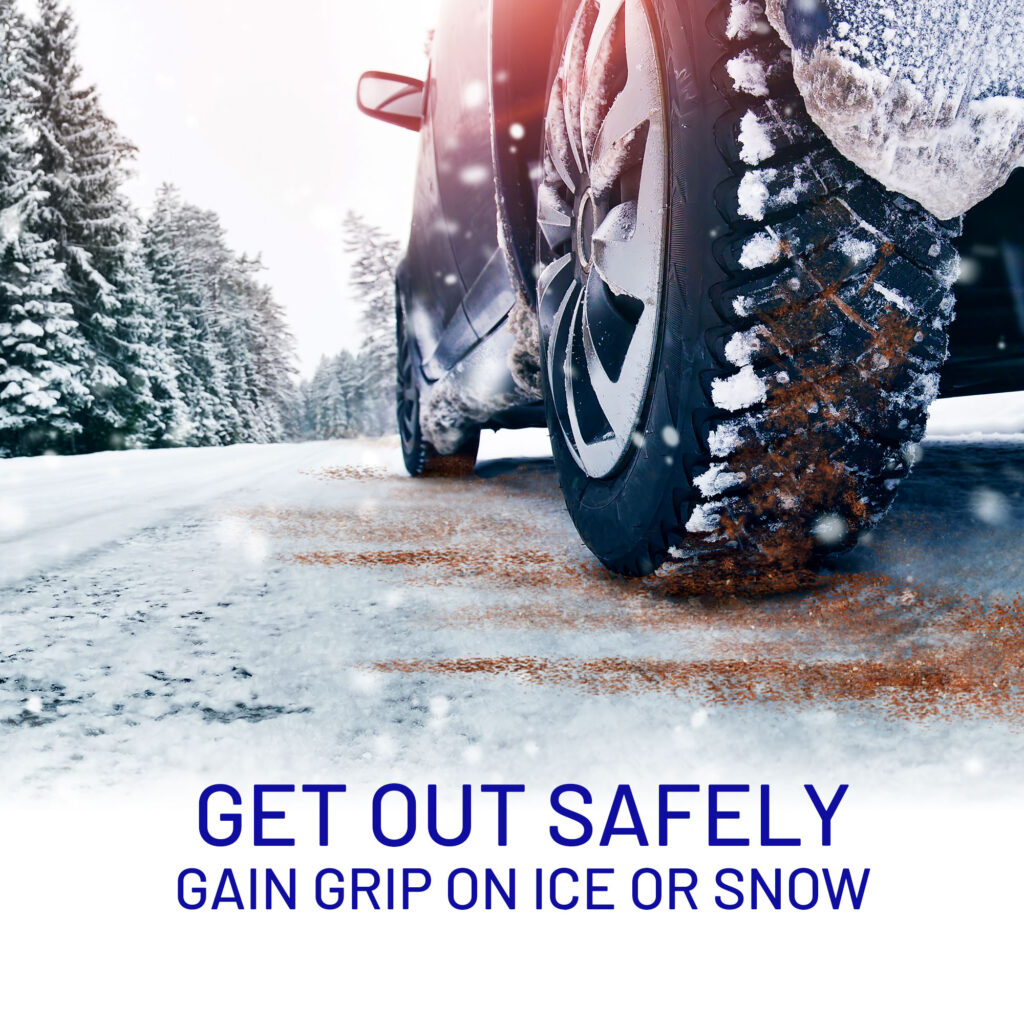Best Ice Melter For Concrete This Winter In Aspen
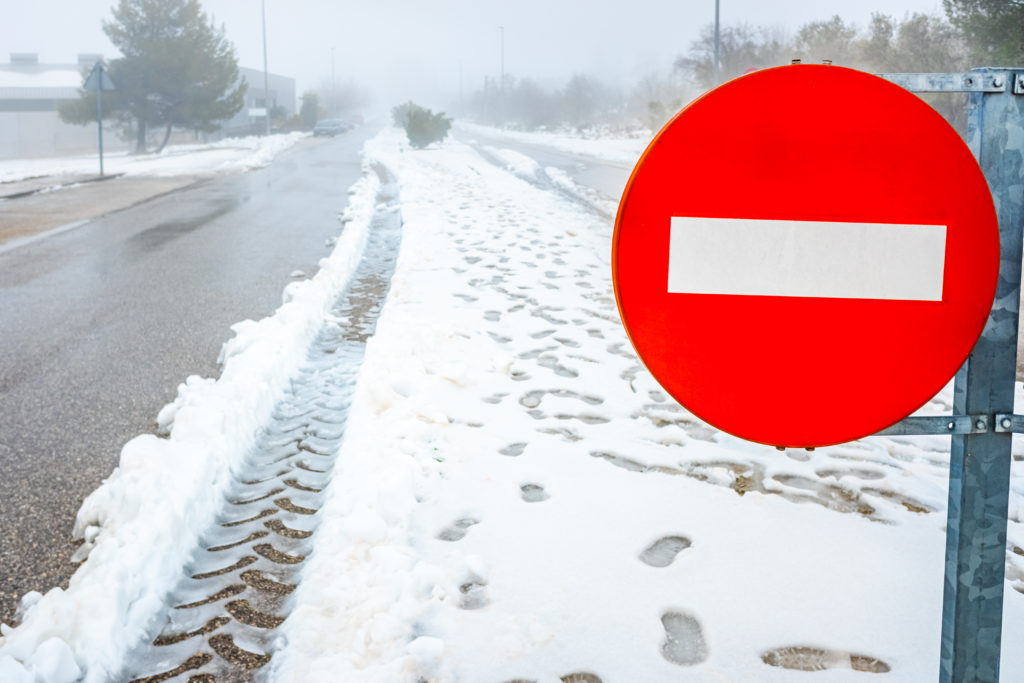
Waiting for winter? We are too! It’s that time of the year when people get excited about the snow season and of course, Christmas.
On average, the first snowfall starts around October 10th. Though this year is different, as the first snowfall appeared on September 1 with a few inches of snow covering the area. And by September 9, it was several inches of snow.
But when it comes to snowfall, the major ones happen in December and January, when the sidewalks and driveways get covered with a thick white layer of snow. While that’s beautiful, it can be severely dangerous too.
- How To Protect Your Concrete?
- Concrete Safe Ice Melt
- Why Does Concrete Require Maintenance?
- What Is The Best Ice Melt For Concrete?
- Benefits and Drawbacks.
- Chloride And Concrete
- Make An Informed Decision
- Other Ice Melt Product
Every year more than 116,000 people in the USA get injured because of the snow, and around 1,300 even get killed. This makes the removal of snow critical for the people of Aspen.
However, removing snow can be a strenuous task to do, but when you know the drill, it gets a lot easier. And by the drill, we mean how to choose a concrete safe deicer.
But here’s a fact– the harsh winter and snow can be very harmful to concrete surfaces. The recurring freeze-thaw cycle during the winters can damage and crack these surfaces.
How To Protect Your Concrete?
Many people prefer salt and chloride-based solutions for melting the snow, but little do they know, this isn’t a good option. Salt doesn’t stop the thawing and freezing process. Also, while salt isn’t chemically reactive with concrete, it attracts moisture that can cause corrosion.
The best option is a concrete safe ice melt, and now you know what to do before the deadly winter months arrive.
Concrete Safe Ice Melt
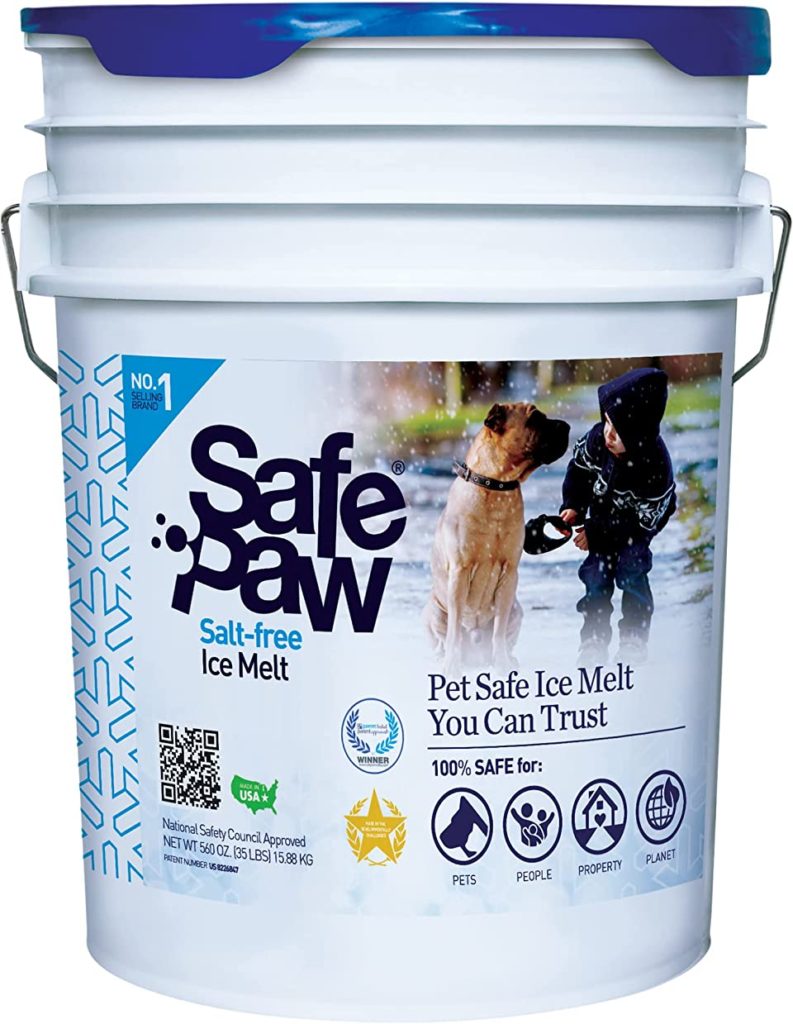
Safe Paw
The Original and the #1 Child and Pet Safe Ice Melt for over 20 years. Guaranteed environmentally safe – will not harm waterways and sensitive wetlands.
Why Does Concrete Require Maintenance?
Concrete absorbs moisture because it is a porous substance, especially when it is fresh or of poor quality. The water within freezes and swells once it absorbs moisture and the temperature drops below freezing. The concrete will chip and flake as a result of this. Applying an ice melt to your concrete will be highly effective and not at all damaging if done appropriately with the help of safe products and according to the manufacturer’s directions.
What Is The Best Ice Melt For Concrete?
Not all ice melts are suitable for use on concrete. Chloride is the most common component in ice melt. The most prevalent element in ice melt is rock salt or sodium chloride. The metal rebar within the concrete is attacked when sodium chloride is absorbed into it.
It is equally damaging to the plants, soil, animals, and groundwater in the surrounding area. Because calcium chloride creates an oily layer on the surface, it discolors concrete. Other dangerous ice melts include magnesium chloride, ammonium nitrate, and ammonium sulfate. Concrete is attacked and disintegrated by them. Chemically, urea is harmless to concrete.
Let’s look at some more options and their benefits and drawbacks.
- Safe Ice Melt For Concrete
Fortunately, there is a highly safe option for melting ice on concrete surfaces that is eco-friendly, family-friendly, and pet-friendly. Safe Paw is a tried-and-true product that has been certified as a PTPA Green Product. You can use it with complete confidence.
It’s a one-of-a-kind compound with a time-released action because it’s completely salt-free. It has a non-corrosive structure with a crystalline amide core and glycols. Unlike rock salt and other salt-based ice melting products, which include potassium chloride or sodium chloride and can only melt ice to a temperature of 24 degrees, it can melt ice to 2 degrees below zero. Salt-based treatments take longer to function, and the crystals often linger on the surface of snow and ice for long periods before penetrating, posing a risk to pets and children if they eat the contents.
- Rock Salt
Although rock salt melts ice, it does so at a slower rate than ice melt. Rock salt repels moisture and helps to keep surfaces dry. Rock salt is a cost-effective alternative to ice melt that works up to 15 degrees Fahrenheit. For people on a tight budget, rock salt is a good option, but is it worth it in the long run?
Because rock salt takes longer to dissolve than ice melt, you may need to use more of it. To melt ice, you may find yourself adding more and more. One of the most significant disadvantages to consider is that rock salt is corrosive and capable of corroding some metals, such as rebar found in concrete. Pets, kids, plants, and your family members are at risk from rock salt.
- Calcium Chloride
As a hygroscopic compound, calcium chloride absorbs moisture. During the dissolving process, exothermic heat of up to 60 degrees Celsius is released. This heat swiftly melts the ice and snow, turning it into water. It’s a lot more expensive, plus it’ll degrade your new concrete and leave a mess behind.
- Magnesium Chloride
Magnesium chloride has a minimum working temperature of -13 degrees. As a result, it works almost as well as calcium chloride. Because it is hygroscopic, it also functions swiftly. Regardless, it is more costly than calcium chloride. It has the potential to damage fresh concrete, so be careful.
- Calcium and Magnesium Acetate(CMA)
It has dolomitic lime and acetic acid. It is used as a coating for other ice melts.
It works by preventing snow and ice particles from adhering to concrete surfaces. It is more effective at preventing re-freezing than at melting snow and ice.
Because calcium magnesium acetate tends to leave a slush behind, your new concrete will be more susceptible to freeze-thaw damage.
- Potassium Chloride
It’s non-corrosive, safe for animals and plants, and works well on wire mesh or rebar-reinforced concrete.
Regardless, potassium chloride dissolves ice much more slowly than other ice dissolvers. As a result, it will not prevent slips or falls, nor will it clear snow off the concrete. It is not effective for clearing a large amount of snow or ice.
- Natural Ingredients For Melting Ice
As an alternative to chemical ice melts, certain natural and non-toxic products can be utilized. They are, however, less effective and inflict less damage to concrete and plants. The following are some of them:
- Wood shavings
- Sand
- Sawdust
- Kitty litter
Their roughness and anti-slip properties contribute to their effectiveness. They have good traction and make walking on ice much simpler. They do not melt ice. To reduce the need for chemical ice melt, they are generally blended with ice melter products.
Chloride And Concrete
Any chloride-containing material, such as sodium chloride, potassium chloride, or calcium chloride, may be safe in other conditions but not in concrete, particularly new concrete. By increasing the pore size and enabling water to get through, these mildly acidic compounds destroy the paste that holds concrete together. The freeze-thaw cycle grows more harmful as more water enters the pores of your concrete. Salt is unique in that it is hygroscopic or able to hold water. The incidence of freeze-thaw damage to concrete increases as salt penetrates the pore structure.
Chlorides can cause corrosion of reinforcing steel because they quickly penetrate the thin, protective iron oxide layer and initiate the corrosive process in steel.
Deicing salts’ most hazardous component is the chloride ion, which is responsible for the majority of the direct plant tissue damage. Excess salt disrupts soil structure, causing poor infiltration and erosion. Dogs can be poisoned by ingesting significant amounts of sodium chloride; even a small amount can cause gastrointestinal upset. It also bothers our four-legged pals’ paws.
Precautions
- When utilizing ice melt, you must take the following precautions:
- The ice melts should not be used excessively. Clear all snow from concrete surfaces before applying deicing solutions, and make sure you follow the instructions on the label carefully.
- Because de-icers are caustic, always wear gloves.
- Salt-based ice melt should not be used on new concrete that hasn’t fully hardened.
- Keep in mind that all chloride goods are harmful to the environment. If you suspect any contamination or you notice any plant damage, wash your concrete surfaces with water.
Make An Informed Decision.
To begin with, not every product on the market is suitable for you and your concrete, as some producers sell snowmelt that contains chemicals or salts that can harm children, pets, plants, and concrete.
Such substances are dangerous to your health and the health of your family. They have the potential to damage the surface and cause fractures, especially if the concrete is fresh. It’s crucial to choose a product that’s both safe for everyone and concrete. It’s also worth noting that these products harm the environment as well as the surface.
Choose a salt-free, non-toxic ice melt. Not only will it keep you safe, but it will help keep neighboring vegetation alive without damaging water bodies. The best ice melt means safer families, fewer injuries, and a healthier environment.
When choosing the best ice melter for concrete, you must consider every aspect of its use. Moreover, you should clean up and preserve concrete, wood, asphalt, and wooden surfaces. It would be beneficial if you kept a check and balance system in place to verify that your efforts to obtain and utilize ice melt were not in vain.
The usage of ice melt safe for concrete products, which offer more protection to your concrete surfaces, is the solution to this problem. You may get your salt-free natural ice melt online or at any nearby store.
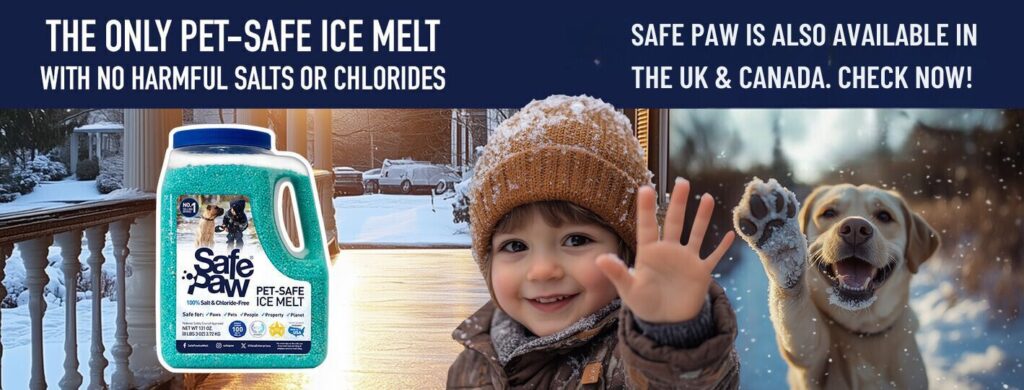
Conclusion
The bulk of ice melt and salt products are well-known to be dangerous to our concrete. The truth is that salt does not affect freezing and thawing. Because salt is slightly acidic, it weakens the chemical bonds that hold the concrete together.
Another aggravating aspect is that the majority of driveway concrete is reinforced with steel. When exposed to salt, it corrodes quickly. It is attracted to moisture, which can cause corrosion. Corrosion damages the rebar beneath the surface of the concrete, resulting in cracks and flakes. Hence, salts are not concrete-safe ice melt products. To boost its effectiveness, Safe Paw attracts heat. As a result, your concrete will remain safe when melting snow and ice without the need for any dangerous chemicals. It is a safe ice melt for concrete and all of us.
FAQs
Stay safe and confident this winter with Traction Magic!
This innovative, 100% natural product offers instant traction on any icy surface. Whether you’re navigating your sidewalk, steps, or driveway, Traction Magic helps you stay upright and prevents falls.
Other Ice Melt Products
Walk On Ice
Prevent slips at home, work or on the go, The handy disposable canister can be taken everywhere, with the same 100% naturally occurring minerals that provide instant traction on ice or snow.
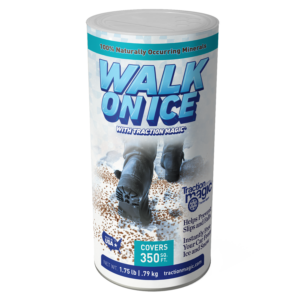
Safe Thaw
Imagine an ice melt you can put down and never worry about. It won’t harm pets, kids and your property. That’s Safe Thaw. Unlike anything else on the market, Safe Thaw can change how winter affects our planet.
